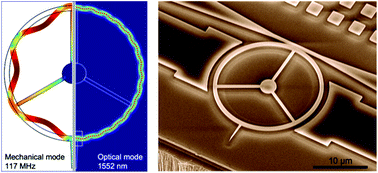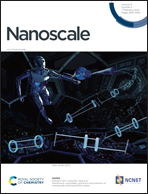Optomechanical resonating probe for very high frequency sensing of atomic forces†
Abstract
Atomic force spectroscopy and microscopy are invaluable tools to characterize nanostructures and biological systems. State-of-the-art experiments use resonant driving of mechanical probes, whose frequency reaches MHz in the fastest commercial instruments where cantilevers are driven at nanometer amplitude. Stiffer probes oscillating at tens of picometers provide a better access to short-range interactions, yielding images of molecular bonds, but they are little amenable to high-speed operation. Next-generation investigations demand combining very high frequency (>100 MHz) with deep sub-nanometer oscillation amplitude, in order to access faster (below microsecond) phenomena with molecular resolution. Here we introduce a resonating optomechanical atomic force probe operated fully optically at a frequency of 117 MHz, two decades above cantilevers, with a Brownian motion amplitude four orders below. Based on Silicon-On-Insulator technology, the very high frequency probe demonstrates single-pixel sensing of contact and non-contact interactions with sub-picometer amplitude, breaking open current limitations for faster and finer force spectroscopy.

- This article is part of the themed collection: 2020 Nanoscale HOT Article Collection


 Please wait while we load your content...
Please wait while we load your content...